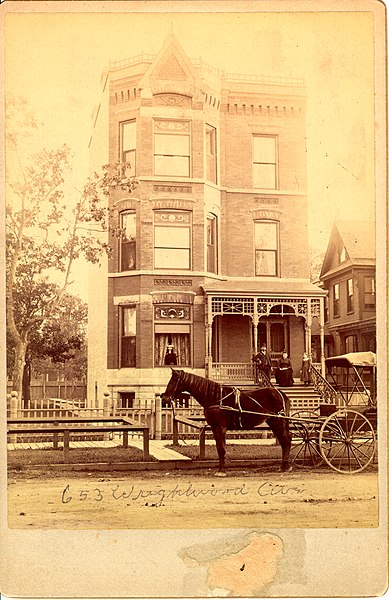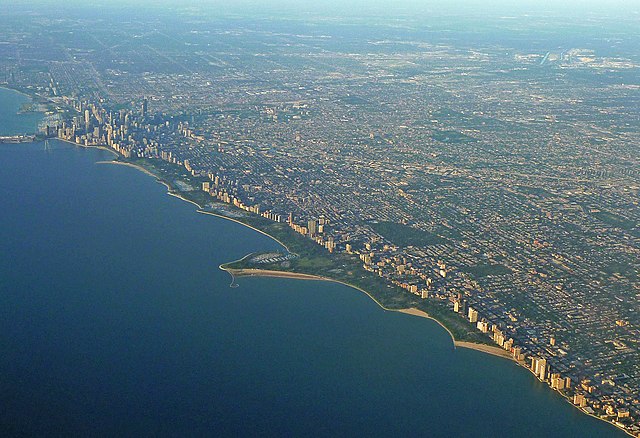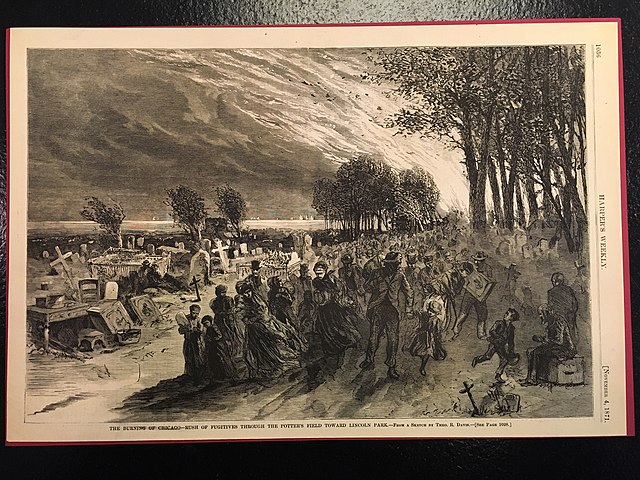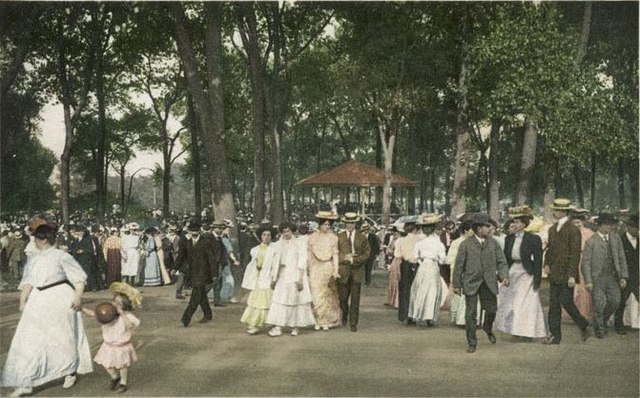Lincoln Park is a designated community area on the North Side of Chicago, Illinois. It is located west of Lincoln Park.
Bissell Street District in the Lincoln Park neighborhood
1880s photo of 653 W. Wrightwood (now 655 W. Wrightwood) in the Lincoln Park neighborhood, typical of the Victorian-era structures in the area. Note the wooden sidewalk, dirt road and lack of buildings surrounding the edifice.
1934 FBI photograph of the Biograph, soon after the shooting of John Dillinger
Building on Orchard and Dickens in 1964 defaced with "Young Lords" Graffito
Lincoln Park is a 1,208-acre (489-hectare) park along Lake Michigan on the North Side of Chicago, Illinois. Named after US President Abraham Lincoln, it is the city's largest public park and stretches for seven miles (11 km) from Grand Avenue, on the south, to near Ardmore Avenue on the north, just north of the DuSable Lake Shore Drive terminus at Hollywood Avenue. Two museums and a zoo are located in the oldest part of the park between North Avenue and Diversey Parkway in the eponymous neighborhood. Further to the north, the park is characterized by parkland, beaches, recreational areas, nature reserves, and harbors. To the south, there is a more narrow strip of beaches east of Lake Shore Drive, almost to downtown. With 20 million visitors per year, Lincoln Park is the second-most-visited city park in the United States, behind Manhattan's Central Park.
Aerial view of the seven-mile-long Lincoln Park shoreline
Couch Mausoleum in Lincoln Park, October 2013. This mausoleum is the only standing remnant of the cemetery that existed in part of Lincoln Park in the 19th century.
Image from Harper's Weekly of people escaping the Great Chicago Fire by fleeing to the cemetery in Lincoln Park
A concert in Lincoln Park circa 1907








